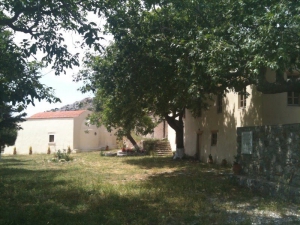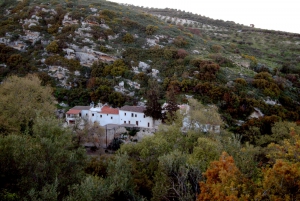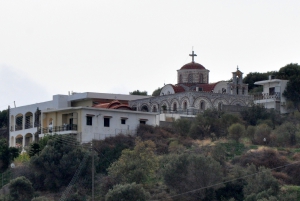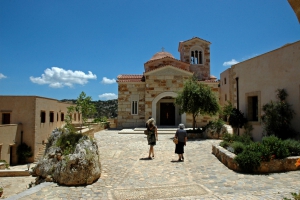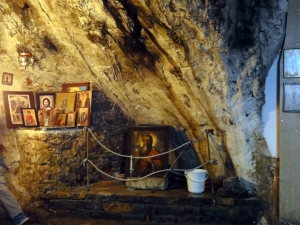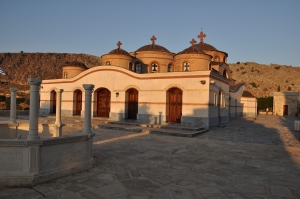The Monastery of the Agio Pnevma (Holy Spirit) was probably founded in the 12th century and certainly at the end of Venetian rule it was already autonomous and in welfare. On June 15, 1821, the local Turks massacred the monks and burned the monastery.
The monastery of Panagia Spiliotissa is located 22km south of Heraklion, between the villages Houdetsi and Agios Vasilios. It is hidden in the sides of the lush green Spiliotissa canyon. It can be easily accessed by walking on a green path, 500m long, from Houdetsi. Along this path you will see the Byzantine churches of St. John and Anthony, and two old water mills.
The Monastery of Agia Fotini the Samaritan is located at Ellinoperamata, Malevizi district, on the road leading to Rodia village. It was founded in June 1991 by the Archbishop of Crete, Timotheos. The monastery houses the church of Agia Fotini, the chapel of St. Fanourios, the nuns’ cells and the tomb of the founder of the monastery, Timotheos.
At the area of Agia Kyriaki, on a rocky hill below the the ruins of the Byzantine fort Kastellos we meet the newly erected monastic buildings of the monastery Chrisopigi located in Chania town This place was blessed with his presence in 2002 by the Ecumenical Patriarch Bartholomew, who walked in the trails in the area and laid the foundation stone of the new monastery temple, dedicated to the Transfiguration of Christ.
The Holy Monastery of Santa Irene Hrysovalantou in Heraklion is located on the southern outskirts of the city. It was founded as a male monastery on April 14, 2002 by father Methodios Samaritakis. It currently has a few monks engaged in the production of wax and incense, and the management of the House of Elders that hosts elderly people.
The Monastery of St. John in Kapsas is located 9km east of Makrigialos next to Goudouras. This is owned by Toplou Monastery, near Sitia, and is dedicated to the Beheading of St. John the Baptist, celebrated on August 29.
The monastery of St. Andrew was built long ago in one of the most isolated shores of the Mirabello Province, near Finokalia village. Today the old monastery does not survive, but a small church of St. Andrew has been built at the same site.
The monastery of St. John Theologos (John the Apostle) in Anopolis is located relatively close to Heraklion. Although it has experienced the cruelty of the Turks during the Turkish occupation of Crete, the monastery still operates today. It is built in a beautiful valley at an altitude of 170m, southeast of Anopolis.











